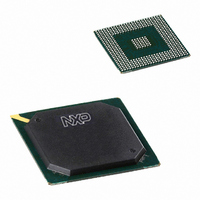PNX1501E,557 NXP Semiconductors, PNX1501E,557 Datasheet - Page 361

PNX1501E,557
Manufacturer Part Number
PNX1501E,557
Description
IC MEDIA PROC 266MHZ 456-BGA
Manufacturer
NXP Semiconductors
Datasheet
1.PNX1502EG557.pdf
(828 pages)
Specifications of PNX1501E,557
Applications
Multimedia
Core Processor
TriMedia
Controller Series
Nexperia
Interface
I²C, 2-Wire Serial
Number Of I /o
61
Voltage - Supply
1.14 V ~ 1.26 V
Operating Temperature
0°C ~ 85°C
Mounting Type
Surface Mount
Package / Case
456-BGA
Lead Free Status / RoHS Status
Lead free / RoHS Compliant
Program Memory Type
-
Ram Size
-
Other names
935274728557
PNX1501E
PNX1501E
PNX1501E
PNX1501E
Available stocks
Company
Part Number
Manufacturer
Quantity
Price
Company:
Part Number:
PNX1501E,557
Manufacturer:
NXP Semiconductors
Quantity:
10 000
- Current page: 361 of 828
- Download datasheet (8Mb)
Philips Semiconductors
Volume 1 of 1
PNX15XX_SER_3
Product data sheet
Chroma keying allows overlaying video depending on whether the pixel lies within a
range of color values. This feature allows video transparency or “green screening”—a
technique for compositing foreground imagery with a background.
Color keying is considered to be a subset of chroma keying and can be achieved by
setting the color range accordingly; because of the similarity between Chroma and
Color keying (the difference being a color range instead of a fixed single color), this
document will use the terms interchangeably, even though QVCP implements both
functionality. The chroma/color key result is used for mixing functions downstream.
For example, color keying can be used to determine which pixels should contain
motion video. The color key function will compare the pixels of a layer with the color
key register and place motion video from another layer in those pixels that match. The
Color Key is generated in each layer (before color space conversion). Each byte lane
of the expanded RGB 8:8:8 or YUV 4:4:4 new pixel is passed through an 8-bit Color
Key AND mask. (For the YUV 4:2:2 input format, the U and V samples are repeated
for every other pixel). The result in each channel is compared to the register values
for Color Key Lower Range and Color Key Upper Range. Every layer can use up to
four color keys. When the pixel component is equal to a range register value or is
within the range, the result of the comparison for that byte lane is true (1). If it’s
outside the range, the result is 0. The results from the three byte lanes are used as
keys in the 8-bit Color Key Combining ROP. This ROP is a mechanism used for
extreme flexibility in keying and is located in the layer. (It is not to be confused with
ROP in the mixer which follows each layer.)
CnKey0_Layer is determined by checking if the B(V) color component is within the
chroma key range.
CnKey1_Layer is determined by checking if the G(U) color component is within the
chroma key range.
CnKey2_Layer is determined by checking if the R(Y) color component is within the
chroma key range.
Cn represents one of the four possible key colors. Since four colors are possible per
layer, four different ROPs exist for determining which component of which key color
should lead to a color key hit. If the color component is within the range, the key is set
to 1. If it’s not, the key is set to 0.
Table 2: Color Key Combining ROPs
ROP Bit
[0]
[1]
[2]
[3]
[4]
[5]
[6]
[7]
Rev. 3 — 17 March 2006
Key2
0
0
0
0
1
1
1
1
Key1
0
0
1
1
0
0
1
1
© Koninklijke Philips Electronics N.V. 2006. All rights reserved.
PNX15xx Series
Chapter 11: QVCP
Key0
0
1
0
1
0
1
0
1
11-8
Related parts for PNX1501E,557
Image
Part Number
Description
Manufacturer
Datasheet
Request
R
Part Number:
Description:
Manufacturer:
NXP Semiconductors
Datasheet:
Part Number:
Description:
Digital Signal Processors & Controllers (DSP, DSC) MEDIA PROCESSOR PNX15XX/266MHZ
Manufacturer:
NXP Semiconductors
Datasheet:

Part Number:
Description:
IC MEDIA PROC 266MHZ 456-BGA
Manufacturer:
NXP Semiconductors
Datasheet:
Part Number:
Description:
NXP Semiconductors designed the LPC2420/2460 microcontroller around a 16-bit/32-bitARM7TDMI-S CPU core with real-time debug interfaces that include both JTAG andembedded trace
Manufacturer:
NXP Semiconductors
Datasheet:

Part Number:
Description:
NXP Semiconductors designed the LPC2458 microcontroller around a 16-bit/32-bitARM7TDMI-S CPU core with real-time debug interfaces that include both JTAG andembedded trace
Manufacturer:
NXP Semiconductors
Datasheet:
Part Number:
Description:
NXP Semiconductors designed the LPC2468 microcontroller around a 16-bit/32-bitARM7TDMI-S CPU core with real-time debug interfaces that include both JTAG andembedded trace
Manufacturer:
NXP Semiconductors
Datasheet:
Part Number:
Description:
NXP Semiconductors designed the LPC2470 microcontroller, powered by theARM7TDMI-S core, to be a highly integrated microcontroller for a wide range ofapplications that require advanced communications and high quality graphic displays
Manufacturer:
NXP Semiconductors
Datasheet:
Part Number:
Description:
NXP Semiconductors designed the LPC2478 microcontroller, powered by theARM7TDMI-S core, to be a highly integrated microcontroller for a wide range ofapplications that require advanced communications and high quality graphic displays
Manufacturer:
NXP Semiconductors
Datasheet:
Part Number:
Description:
The Philips Semiconductors XA (eXtended Architecture) family of 16-bit single-chip microcontrollers is powerful enough to easily handle the requirements of high performance embedded applications, yet inexpensive enough to compete in the market for hi
Manufacturer:
NXP Semiconductors
Datasheet:

Part Number:
Description:
The Philips Semiconductors XA (eXtended Architecture) family of 16-bit single-chip microcontrollers is powerful enough to easily handle the requirements of high performance embedded applications, yet inexpensive enough to compete in the market for hi
Manufacturer:
NXP Semiconductors
Datasheet:
Part Number:
Description:
The XA-S3 device is a member of Philips Semiconductors? XA(eXtended Architecture) family of high performance 16-bitsingle-chip microcontrollers
Manufacturer:
NXP Semiconductors
Datasheet:

Part Number:
Description:
The NXP BlueStreak LH75401/LH75411 family consists of two low-cost 16/32-bit System-on-Chip (SoC) devices
Manufacturer:
NXP Semiconductors
Datasheet:

Part Number:
Description:
The NXP LPC3130/3131 combine an 180 MHz ARM926EJ-S CPU core, high-speed USB2
Manufacturer:
NXP Semiconductors
Datasheet:

Part Number:
Description:
The NXP LPC3141 combine a 270 MHz ARM926EJ-S CPU core, High-speed USB 2
Manufacturer:
NXP Semiconductors

Part Number:
Description:
The NXP LPC3143 combine a 270 MHz ARM926EJ-S CPU core, High-speed USB 2
Manufacturer:
NXP Semiconductors











